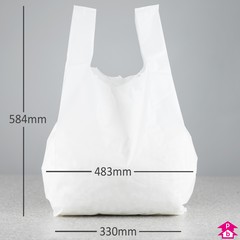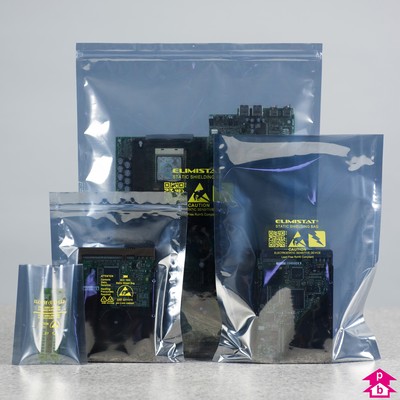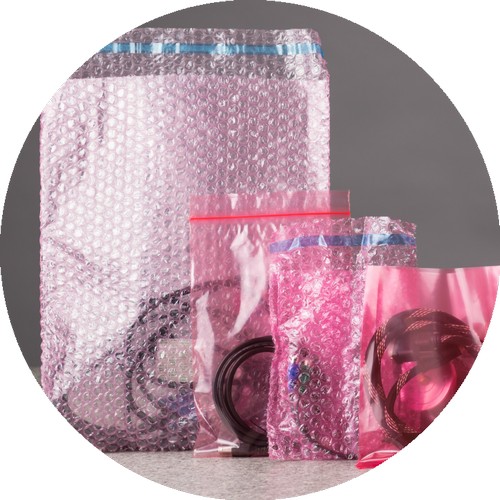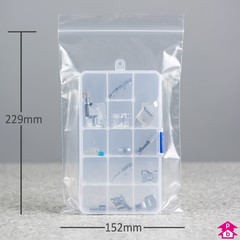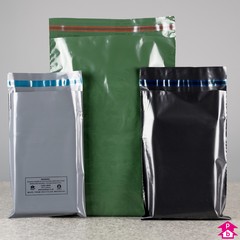- 100% recycled
- Biodegradable
- Carbon neutral
- Compostable
- Recyclable
- Renewable
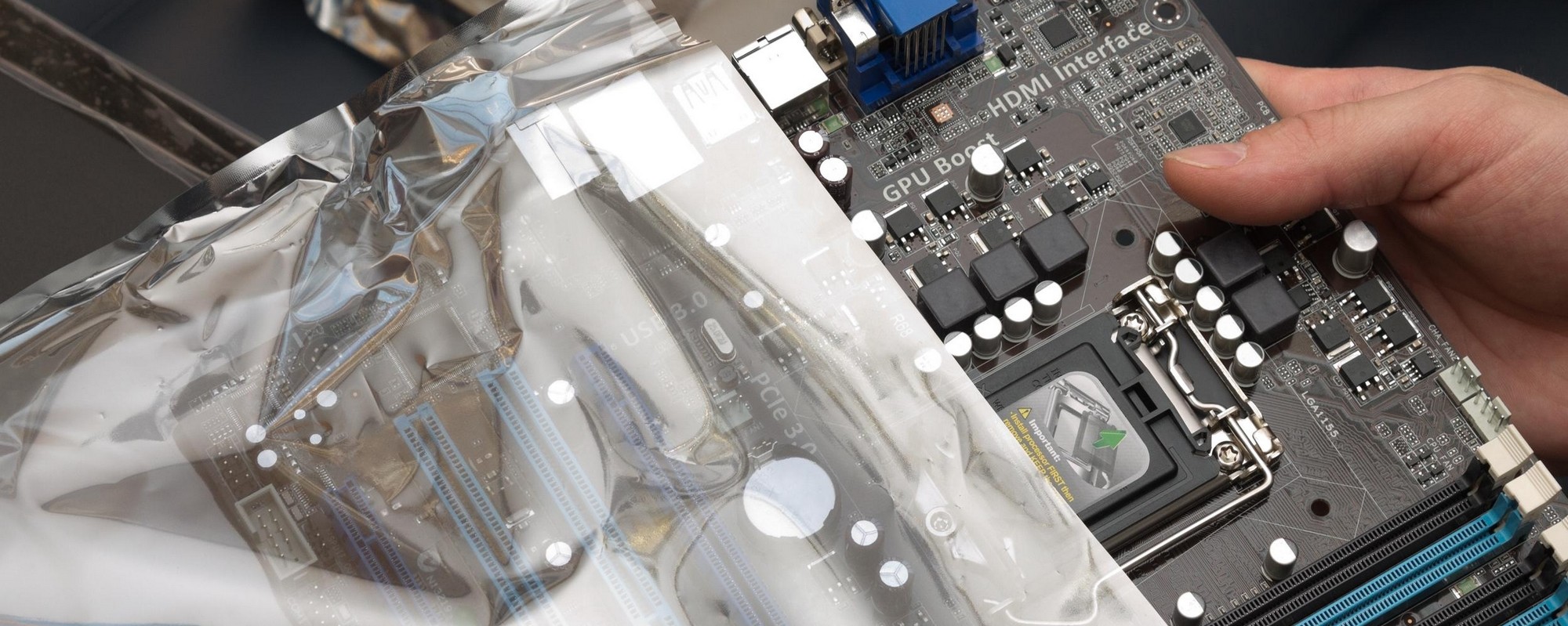
Electrostatic discharge (ESD) bags
 Electrostatic discharge (ESD) bags are multi-layered polythene bags that protect the contents of the bag from an ESD by dissipating the static charge across the exterior of the bag.
Electrostatic discharge (ESD) bags are multi-layered polythene bags that protect the contents of the bag from an ESD by dissipating the static charge across the exterior of the bag.
For this reason, ESD bags provide a useful and cost-effective way to protect delicate electronic parts or items that are susceptible to the effects of an ESD.
ESD bags also prevent the build-up of static electricity when rubbed against another item (tribocharging) and so, like pink antistatic bags, they are safe to use in an electrostatic protected area (EPA). However, only ESD bags will protect against a static shock introduced from another source, such as a person.
 Related to pink antistatic bags
Related to pink antistatic bags Buy static shielding (ESD) bags
Buy static shielding (ESD) bags Buy open-top ESD bags
Buy open-top ESD bags Buy grip seal ESD bags
Buy grip seal ESD bags Buy pink antistatic packaging
Buy pink antistatic packaging
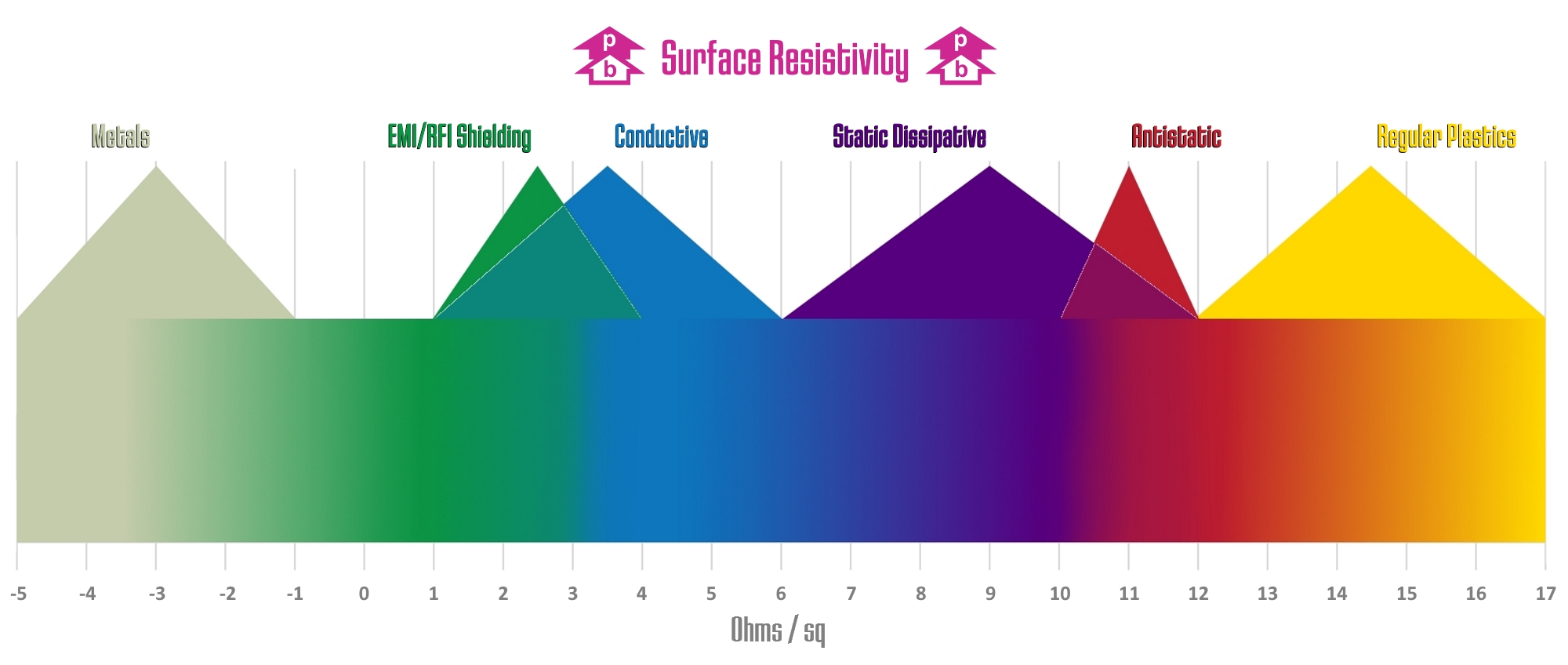
Static electricity - why we need static shield (ESD) bags
Everything in the world is made of atoms, which themselves are comprised of either protons (positively charged), neutrons (no charge) or electrons (negatively charged).
Most of the time, atoms contain the same number of protons and electrons and therefore hold a neutral charge. However, when two materials come into contact, electrons can move from one material to another, leaving one positively charged and the other negatively charged. This is known as triboelectric charging, or tribocharging.
If one of these materials has high resistance to electric current (an insulator), the resulting build-up of electrons can cause a static electric charge, or static electricity. If this insulator then comes in contact with a path for the static charge to reach ground (a conductor), the excess charge may be neutralised in the form of an electrostatic discharge (ESD), or electric shock.
ESDs can be extremely damaging for sensitive electronic devices. Even a small ESD which we cannot see or hear can damage or destroy static-sensitive electronic components. This is why antistatic bags and ESD bags are recommended when handling delicate electronic items, which should be done at a static-free workstation or electrostatic protected area (EPA).
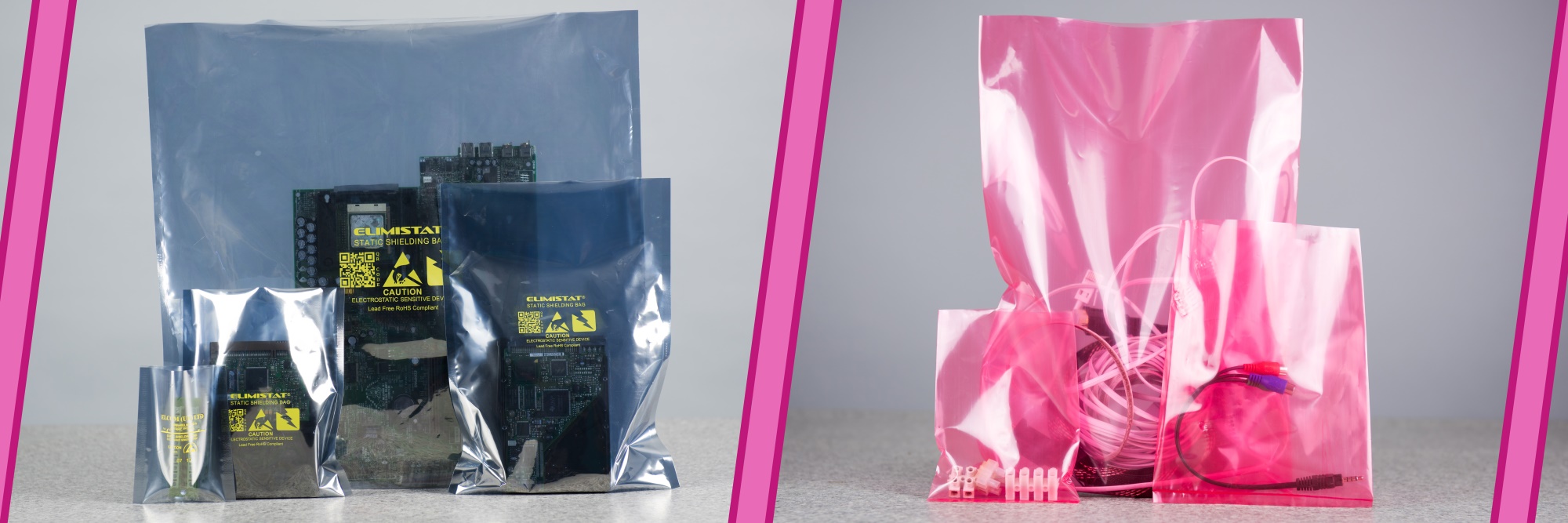
ESD bags vs antistatic bags
There are various types of antistatic bags, but the two most commonly-used are silver static shield (ESD) bags and pink dissipative antistatic bags. These two types of bags both fall within the static-dissipative range (106 and 1012 ohms/sq) on the surface resistivity scale (see chart above), which means they will both dissipate electrical charges across their surface in a way that regular polythene doesn’t.
However, the two types of bag don’t appear at the same point of the surface resistivity scale, as they are made from different materials, so it is important to know the difference between the two types of antistatic bag before choosing the right sort for you.
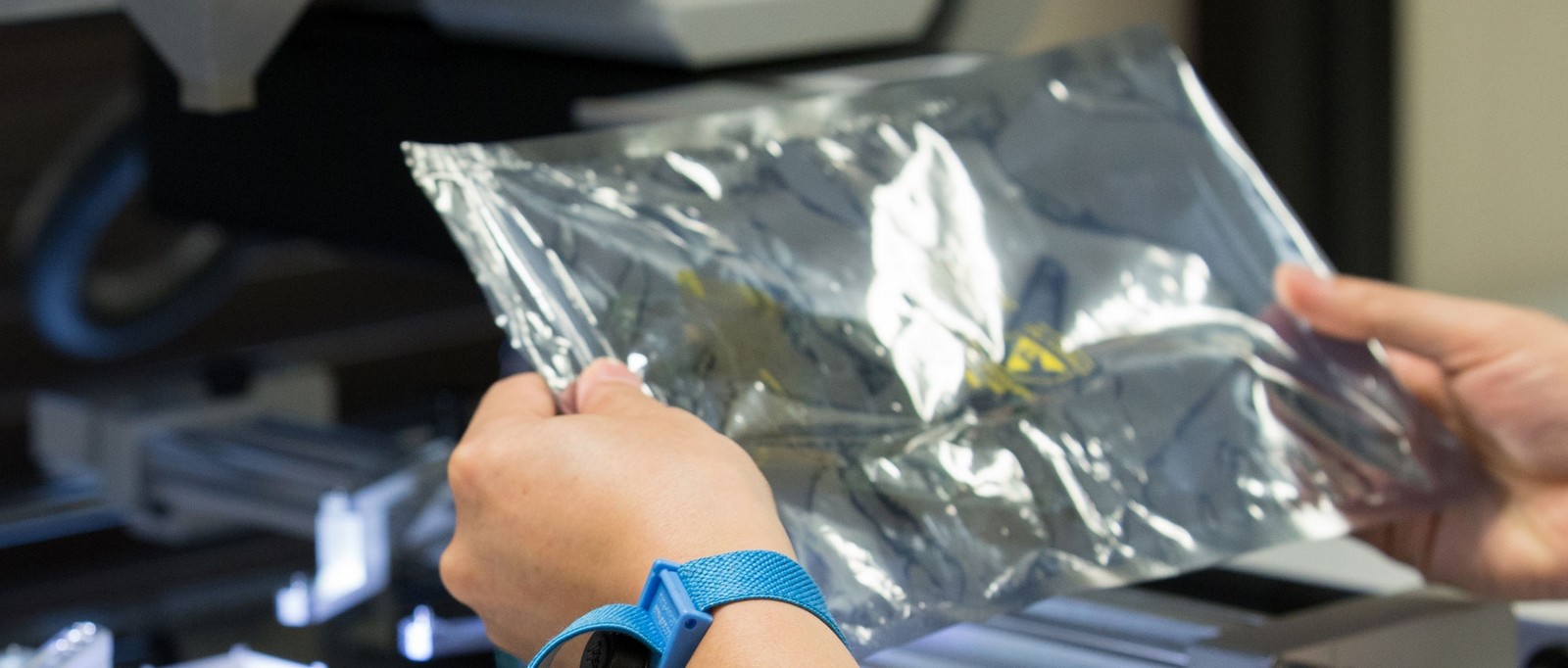
Electrostatic discharge (ESD) bags
Electrostatic discharge (ESD) bags are silver multi-layered bags with a central conductive layer that not only inhibits the build-up of static electricity on the bag’s surface (tribocharging) but also protects the contents of the bag from the introduction of an ESD from an external source.
Also known as static shield bags, ESD bags have a surface resistivity of 108 to 1011 ohms/square (see table above) and are the preferred choice of antistatic bag if handling delicate electronic items or sensitive parts that may be susceptible to static damage.
ESD bags feature an internal layer of polythene inside a layer of conductive metallised polyester, covered by an antistatic and abrasion-proof lacquer. If an ESD is transferred from an external source (e.g. a person) to a sealed and undamaged ESD bag, the metallised polyester layer acts a shield and transfers the charge across the surface of the bag through what is known as the Faraday cage effect.
As a result, the interior of the bag and its contents do not come into contact with the ESD and any static-sensitive parts would remain uncompromised.
Please note: ESD bags must be sealed for the metallised shield to offer effective protection from a static shock. Similarly, any damage to an ESD bag can compromise the effectiveness of the shield. ESD bags should not be folded as this can damage the metallised layer, whilst bags deteriorate over time, so take care to inspect any ESD bag before use for punctures or tears and monitor its condition between uses, to ensure the integrity of the shield is maintained.
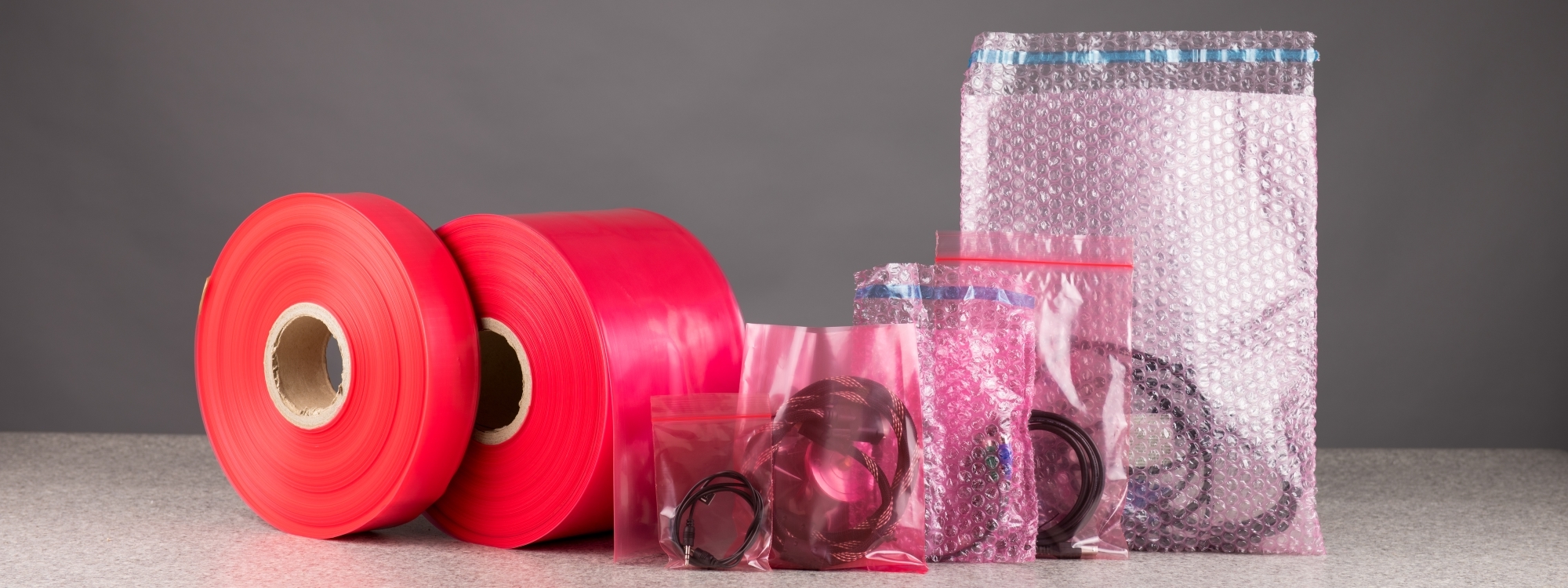
Pink antistatic bags & film
Pink antistatic bags and film are designed to prevent tribocharging, which is the build-up of static electricity when two surfaces are rubbed together. This distinctive pink polythene features a dissipative coating, which transfers the static charge to the ground, or whatever object it happens to be touching.
With a surface resistivity of 1010 to 1012 ohms/square (see table above), pink antistatic bags and film are safe to be introduced to an electrostatic protected area or static-free workstation, but they do not protect the contents of the bag from an electrostatic discharge (ESD) or static shock introduced from another source, such as a person.
These popular bags come in plain form, or as either bubble bags or grip seal bags, whilst you can also get antistatic polythene film in a layflat tube, which can be used to make bespoke bags of different sizes.
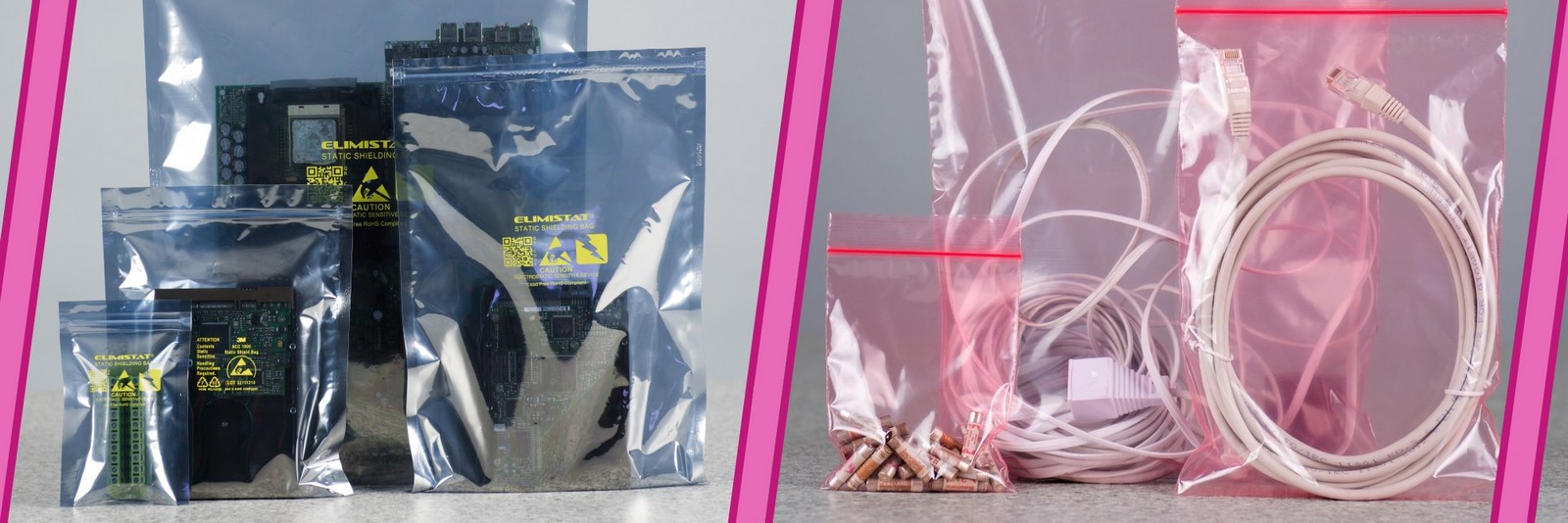
When to use ESD bags and pink antistatic bags
Whether you choose to use silver ESD bags or pink antistatic bags will depend largely on what items your are handling and where you are handling them.
If you are working with sensitive electronic equipment, it is recommended that you do so in an electrostatic protected area (EPA) - a workspace where all objects and the person working are kept at the same electrical potential - to minimise the risk of damage to sensitive electronic components from an ESD.
Here are some handy examples of when to use each type of antistatic packaging:
- Use ESD bags when you are packaging static-sensitive equipment or components, such as printed circuit boards (PCBs), hard drive disks (HDDs), motherboards, graphics cards etc. Always ensure that the ESD bag is fully sealed and is undamaged, otherwise the static shield may be compromised and the static-sensitive equipment is susceptible to damage.
- Use pink antistatic bags when you need to package items that are not sensitive to electrostatic discharge (ESD) themselves, but may come into contact with static-sensitive items during manufacture or transportation - e.g. to store nuts and bolts used to manufacture a computer chassis.

Glossary
Antistatic - Preventing the build-up of static electricity or reducing its effects.
Conductor - A substance that allows an electrical charge to pass easily through it (e.g. copper, steel).
Dissipative antistatic bags - Pink antistatic polythene bags that dissipate (spread) electrical charges across their surface, to find their way to ground.
Electrostatic discharge - The sudden flow of electricity between two electrically charged objects.
Electrostatic discharge bags - Silver, multi-layered polythene bags (including a conductive central layer) that inhibit tribocharging and protect the bag contents from an ESD introduced from an exteral source.
Electrostatic protected area - A workspace where all surfaces, people and objects are kept at the same electrical potential. Used to protect static sensitive equipment during manufacture, servicing or repair.
EPA - See Electrostatic protected area.
ESD - See Electrostatic discharge.
ESD bags - See Electrostatic discharge bags.
Faraday cage - A continuous covering of conductive material that distributes electrical charges across the cage thus protecting the inside of the cage and its contents.
Insulator - A substance that has a high resistance to eletric current (e.g. plastic or rubber).
Static dissipative - See Dissipative antistatic bags.
Static electricity - The imbalance of electrical charges (protons/electrons) on or in a material. This charge remains until it is able to move away by means of an electric current or electrical discharge.
Static shield bags - See Electrostatic discharge bags.
Surface resistivity - The strength of a material in opposing the flow of electric current.
Tribocharging - The build-up of static electricity when two objects come into contact with each other, leaving one positively charged and one negatively charged.
FREE DELIVERY

Bio and 100%-recycled mailing bags in low quantity handypacks.


